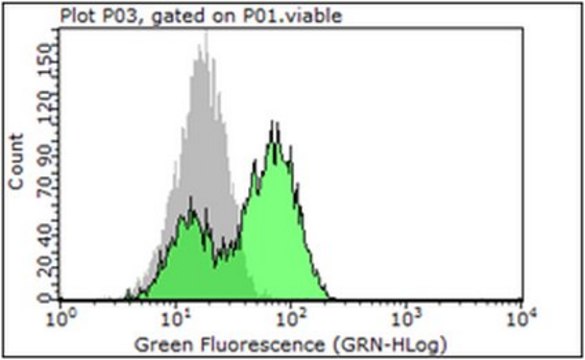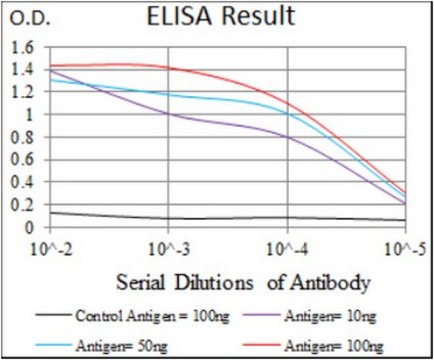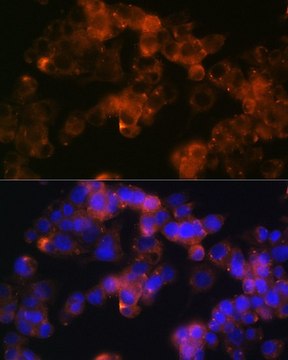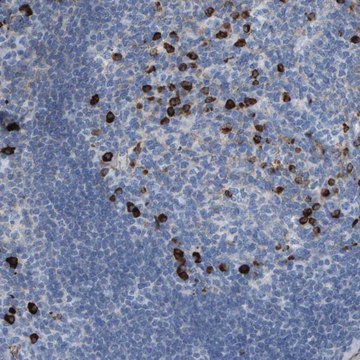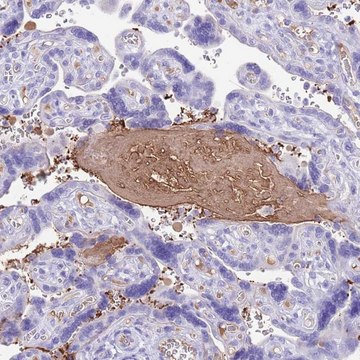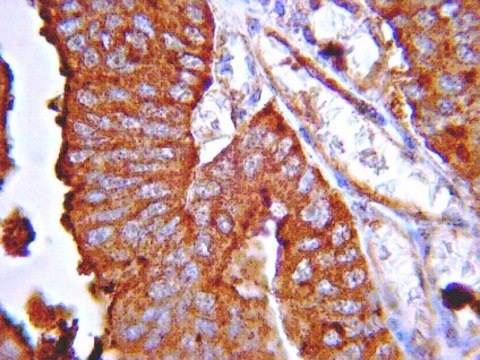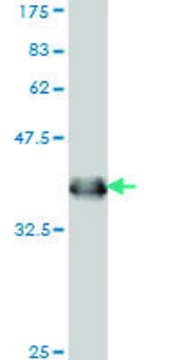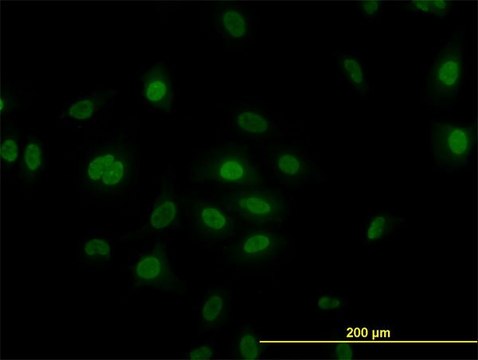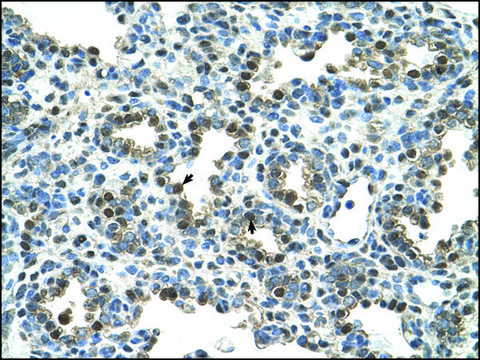MABN483
Anti-IRAP Antibody, Clone 3E1
clone 3E1, from mouse
Sign Into View Organizational & Contract Pricing
All Photos(1)
Synonym(s):
Leucyl-cystinyl aminopeptidase, Cystinyl aminopeptidase, Insulin-regulated membrane aminopeptidase, Insulin-responsive aminopeptidase, IRAP, Oxytocinase, OTase, Placental leucine aminopeptidase, P-LAP, Leucyl-cystinyl aminopeptidase, pregnancy serum form
UNSPSC Code:
12352203
eCl@ss:
32160702
NACRES:
NA.41
Recommended Products
biological source
mouse
Quality Level
antibody form
purified immunoglobulin
antibody product type
primary antibodies
clone
3E1, monoclonal
species reactivity
human, mouse
technique(s)
immunocytochemistry: suitable
western blot: suitable
isotype
IgG1κ
NCBI accession no.
UniProt accession no.
shipped in
wet ice
target post-translational modification
unmodified
Gene Information
human ... LNPEP(4012)
General description
IRAP, also known as Leucyl-cystinyl aminopeptidase, Cystinyl aminopeptidase, Insulin-regulated membrane aminopeptidase, Insulin-responsive aminopeptidase (IRAP), Oxytocinase (OTase), or Placental leucine aminopeptidase (P-LAP) and encoded by the human gene name IRAP/OTASE, is an important aminopeptidase that plays an important role in maintaining homeostasis during pregnancy. IRAP degrades peptide hormones including oxytocin, vasopressin, and angiotensin III; it also appears to play a role in degrading neuronal peptides in the brain such as Met-enkephalin and dynorphin. IRAP also binds angiotensin IV and appears to be the receptor for angiotensin IV in the brain. IRAP is a membrane bound aminopeptidase and is often found within membrane vesicles that together with other proteins like GLUT4 translocates to the plasma membrane in response to insulin or oxytocin. A cleaved fragment of IRAP, the Leucyl-cystinyl aminopeptidase, is found in the blood during pregnancy, low in the first trimester but rising rapidly until birth, whereby it decreases rapidly, thus the secreted form is often used as a pregnancy marker. IRAP is highly expressed in placenta, heart, kidney and small intestine. IRAP is detected at lower levels in neuronal cells in the brain, in skeletal muscle, spleen, liver, testes and colon.
Immunogen
Epitope: N-terminus
Recombinant protein corresponding to the N-terminus of human IRAP.
Application
Anti-IRAP, Clone 3E1 is an antibody against IRAP for use in WB, ICC.
Research Category
Neuroscience
Neuroscience
Research Sub Category
Developmental Signaling
Developmental Signaling
Western Blotting Analysis: A representative lot detected IRAP in 3T3-L1 cells treated with or without insulin (Garza, L.A., et al. (2000). JBC. 275(4):2560-2567).
Immunocytochemistry Analysis: A representative lot detected IRAP in 3T3-L1 cells treated with or without insulin (Garza, L.A., et al. (2000). JBC. 275(4):2560-2567).
Immunocytochemistry Analysis: A representative lot detected IRAP in 3T3-L1 cells treated with or without insulin (Garza, L.A., et al. (2000). JBC. 275(4):2560-2567).
Quality
Evaluated by Western Blotting in insulin treated NIH-3T3 cell lysate.
Western Blotting Analysis: 1.0 µg/mL of this antibody detected IRAP in 10 µg of insulin treated NIH-3T3 cell lysate.
Western Blotting Analysis: 1.0 µg/mL of this antibody detected IRAP in 10 µg of insulin treated NIH-3T3 cell lysate.
Target description
~150 kDa observed. The calculated molecular weight of this protein is 117 kDa, but can be observed at ~150 kDa due to high glycosylation. Uncharacterized band(s) may appear in some lysates.
Physical form
Format: Purified
Protein G Purified
Purified mouse monoclonal IgG1κ in buffer containing 0.1 M Tris-Glycine (pH 7.4), 150 mM NaCl with 0.05% sodium azide.
Storage and Stability
Stable for 1 year at 2-8°C from date of receipt.
Other Notes
Concentration: Please refer to lot specific datasheet.
Disclaimer
Unless otherwise stated in our catalog or other company documentation accompanying the product(s), our products are intended for research use only and are not to be used for any other purpose, which includes but is not limited to, unauthorized commercial uses, in vitro diagnostic uses, ex vivo or in vivo therapeutic uses or any type of consumption or application to humans or animals.
WGK
WGK 1
Flash Point(F)
Not applicable
Flash Point(C)
Not applicable
Certificates of Analysis (COA)
Search for Certificates of Analysis (COA) by entering the products Lot/Batch Number. Lot and Batch Numbers can be found on a product’s label following the words ‘Lot’ or ‘Batch’.
Already Own This Product?
Find documentation for the products that you have recently purchased in the Document Library.
Paula Nunes-Hasler et al.
Nature communications, 8(1), 1852-1852 (2017-11-28)
Antigen cross-presentation by dendritic cells (DC) stimulates cytotoxic T cell activation to promote immunity to intracellular pathogens, viruses and cancer. Phagocytosed antigens generate potent T cell responses, but the signalling and trafficking pathways regulating their cross-presentation are unclear. Here, we
Our team of scientists has experience in all areas of research including Life Science, Material Science, Chemical Synthesis, Chromatography, Analytical and many others.
Contact Technical Service